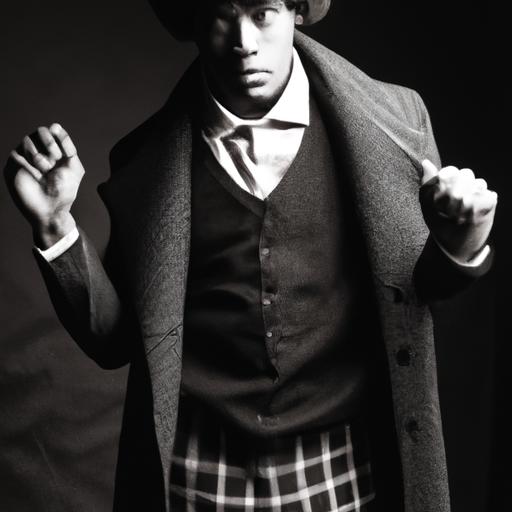Camera Acting Tips: Mastering the Art of Performing for the Lens
Becoming a successful actor in today’s world often requires being comfortable in front of the camera. With the rise of streaming platforms and social media, more and more acting opportunities are available through online mediums. This means that mastering the art of camera acting is crucial for any aspiring performer. In this article, we will explore five essential tips to help you improve your camera acting skills and make the most out of every on-screen opportunity.
1. Understand the Technical Aspects of Camera Acting
Lighting, Framing, and Blocking
One of the key differences between stage acting and camera acting is the level of technicality involved. While on stage, an actor’s movements and expressions need to be projected to a live audience, in front of the camera, it all comes down to the framing, lighting, and blocking. Understanding these technical aspects is vital for delivering a convincing performance.
Framing: The framing of a shot refers to what is included and excluded from the frame. It’s important to know your character’s role in the scene and how they fit into the overall composition. Pay attention to the size of your head in the shot and make sure your body language is aligned with the framing.
Lighting: Lighting plays a crucial role in setting the tone of a scene and highlighting the characters’ emotions. Knowing how to use light to your advantage can greatly enhance your performance. For example, if the scene is supposed to be tense and dramatic, harsh lighting can add to the intensity of the moment.
Blocking: Blocking refers to the movement and positioning of the actors within a scene. It’s important to pay attention to the director’s instructions and find ways to work within the given space. Always be aware of where the camera is and make sure your movements and gestures are framed appropriately.
Use Your Facial Expressions and Body Language Effectively
As an actor, your face and body are your primary tools for conveying emotions and telling a story. When performing for the camera, it’s crucial to use your facial expressions and body language effectively to create a believable character.
Facial Expressions: The camera can pick up even the smallest of facial expressions, so it’s important to be aware of what your face is communicating. Use your eyes, eyebrows, and mouth to convey different emotions and reactions. Practice in front of a mirror to see how subtle changes in your facial expressions can make a big impact on screen.
Body Language: Your body language can reveal a lot about your character’s personality and emotions. Pay attention to how you stand, walk, and use your hands. Make sure your physicality is aligned with your character’s intentions and emotions. For example, if your character is nervous, avoid standing too still or making big movements that don’t match their state of mind.
Master the Art of Reacting
In camera acting, reacting to your scene partner is just as important as delivering lines. As opposed to stage acting, where actors need to project their emotions to a live audience, in front of the camera, subtlety is key. This means that you need to pay close attention to your scene partner’s performance and react accordingly.
Listen and Respond: One of the best ways to create a believable reaction is by actively listening to your scene partner’s lines and responding naturally. Be present in the moment and let your reactions come naturally rather than planning them out beforehand.
Non-Verbal Cues: Along with your facial expressions and body language, non-verbal cues such as nods, head tilts, and eye movements can add depth to your performance. Pay attention to these cues and use them to enhance your reactions.
2. Develop a Strong Understanding of Your Character
Internalization and Subtext
In order to deliver an authentic and believable performance on camera, it’s crucial to have a deep understanding of your character. This means going beyond the lines in the script and understanding their motivations, fears, and desires.
Internalization: Internalization refers to the process of making the character’s thoughts and emotions your own. This allows you to tap into your character’s mindset and deliver a more natural and nuanced performance. To internalize your character, ask yourself questions about their background, relationships, and motivations.
Subtext: Subtext is what lies beneath the surface of a character’s actions and words. In camera acting, it’s important to understand the subtext behind each line and use it to inform your performance. Take the time to analyze the script and identify the underlying emotions and intentions of your character in each scene.
Use Your Voice Effectively
Your voice is another important tool in camera acting as it can reveal a lot about your character’s emotions and personality. Make sure to use your voice effectively to bring your character to life on screen.
Tone and Pitch: The tone and pitch of your voice can reveal a lot about your character’s emotional state. Experiment with different tones and pitches to find what works best for your character in each scene.
Pacing and Rhythm: Pacing and rhythm refer to the speed and flow of your speech. Pay attention to the pace of your lines and vary it according to the emotional intensity of the scene. This will help make your performance more dynamic and engaging.
3. Master the Art of Improvisation
Be Spontaneous and Open to Change
While stage acting often involves following a pre-written script word for word, camera acting allows for more improvisation and spontaneity. Being open to change and embracing the unexpected can lead to some of the most memorable performances.
Be Present in the Moment: Improvisation requires being fully present in the moment and responding to your scene partner’s cues. Let go of any preconceived notions and allow yourself to react naturally to the situation at hand.
Stay True to Your Character: While improvising, make sure to stay true to your character’s motivations and emotions. Don’t just say whatever comes to mind; instead, use your understanding of your character to guide your choices.
Learn to Adapt to Different Camera Techniques
Different camera techniques require different approaches from actors. As a camera actor, it’s important to be aware of these techniques and adapt your performance accordingly.
Single-Camera vs Multi-Camera: Single-camera filming involves shooting a scene one angle at a time, while multi-camera filming captures multiple angles simultaneously. It’s important to understand the differences between these two techniques and adjust your performance accordingly.
Handheld vs Static Shots: Handheld shots involve a moving camera, while static shots are still and stationary. Understand how these techniques affect the framing and pacing of your performance to deliver a more natural and cohesive performance.
4. Nail Your Auditions
Preparing for Auditions and Nailing Your Performance
Auditions are an essential part of any actor’s career, and mastering the art of auditioning can greatly increase your chances of landing a role. Here are some tips to help you nail your next audition:
Know Your Lines: The first step to nailing an audition is being prepared. Know your lines inside out and take the time to understand your character’s motivations and subtext.
Make Bold Choices: Casting directors are looking for actors who stand out and make bold choices. Don’t be afraid to take risks and add your own spin to the character.
Stay Focused and In the Moment: Auditions can be nerve-wracking, but it’s important to stay focused and present in the moment. Use your training and skills to deliver a compelling performance, and don’t let any mistakes throw you off.
5. Take Care of Yourself
Mental and Physical Preparation
Acting is a physically and emotionally demanding profession, and it’s important to take care of yourself in order to perform at your best.
Mental Preparation: Before any performance, take the time to mentally prepare yourself. This could mean practicing relaxation techniques or visualizing a successful performance. Whatever works for you, make sure to take care of your mental well-being.
Physical Preparation: Acting on camera often involves long hours and multiple takes, so it’s important to stay physically fit. Make sure to get plenty of rest, eat well, and exercise regularly to maintain your energy levels and stamina.
Conclusion
Mastering the art of camera acting takes dedication, practice, and a deep understanding of your craft. By following these tips and continuously honing your skills, you can become a confident and versatile camera actor who is ready to take on any on-screen role. Remember to always stay true to yourself as an actor and be open to learning and growing with each new opportunity. With these tips in mind, go forth and conquer the camera!




